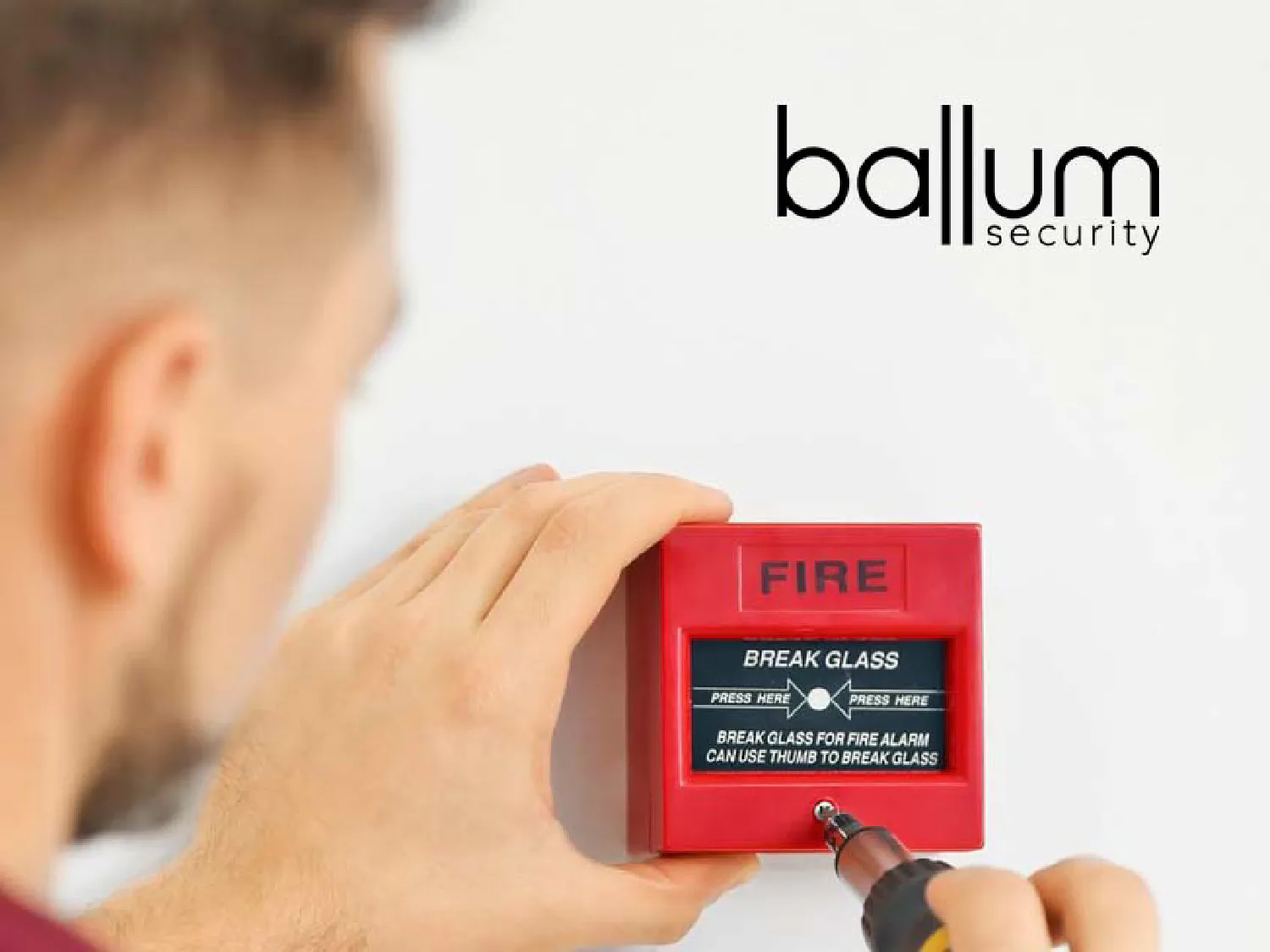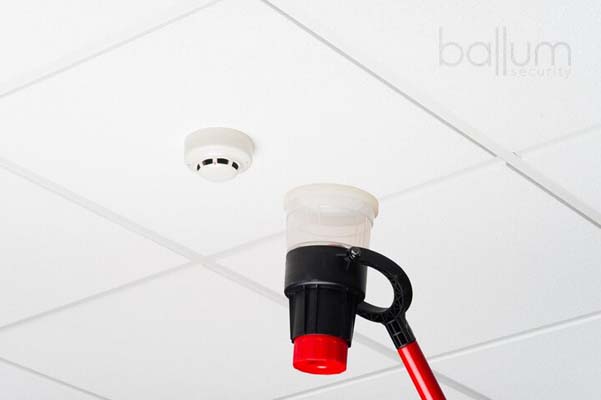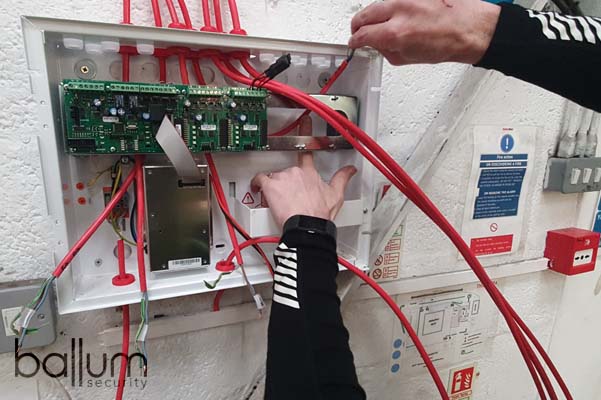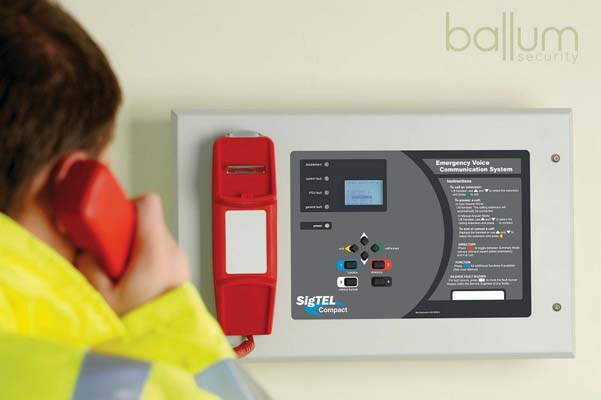Fire Alarms & Emergency Refuge

Fire Alarms
If you need a BS5839-compliant fire alarm system, Ballum Security is ready to provide you with all the information and assistance you need. Fire alarms are a life safety system and should be treated with the utmost respect. Fire alarms are there to protect property, but most importantly life.
Our Fire Services
- Design: Ballum Security can design a suitable fire system for your premises and protection type.
- Installation & Commissioning: We specialise in commercial fire alarms and follow the recommendations of BS5839-1:2017.
- Maintenance: It is imperative that fire alarms are serviced, at least, every 6 months.
- Emergency Help: As a fire alarm customer, you have access to our emergency 24/7 call-out.
- Monitored Systems: Our systems can be connected directly to the fire brigade to ensure you are protected 24/7

Fire Alarm Testing

Fire Alarm Panel During an Upgrade
Types of Fire Alarm Categories
Your building should already have a Fire Risk Assessment (FRA) and within that risk assessment, you should be able to find your fire alarm category;
-
P1 protects the whole building.
-
P2 is installed in defined parts of the building only.
-
L1 provides for Automatic Fire Detection (AFD) to be installed in all areas of a building.
-
L2 provides Automatic Fire Detection (AFD) as defined in L3 as well as high-risk or hazardous areas. Examples of this could be kitchens, boiler rooms, sleeping risk, storerooms if not fire-resistant or if smoke could affect escape routes.
-
L3 Automatic Fire Detection (AFD) with smoke detection should be installed on escape routes with detection in rooms opening onto escape routes.
-
L4 provides Automatic Fire Detection (AFD) within escape routes only.
-
L5 is installed in a building with a specific risk that has been identified. An example of this would be if there was an area of high risk that requires detection the category would be L5/M.
-
Fire Alarm System is a manual operation-only system which has call points on all exits as well as corridors where persons are not expected to walk any more than 45m to operate one.
Frequently Asked Questions
Do I really need a logbook?
If the worst happens, the logbook will serve as vital evidence to ensure that the responsible person has carried out their job correctly. If false alarms are not recorded and this means that an evacuation was not staged, the implications could fall onto their shoulders.
How often do I need to test the alarm?
Once a week. The test should be carried out by activating a call point. A different call point should be used each time until they have all been tested at which point you can start from the beginning again
How often Should my Fire Alarm be Serviced?
No less than 6 months.
Fire Alarm Maintenance
It is imperative that fire alarms are serviced, at least, every 6 months. The fire alarm panels contain backup batteries that, depending on the category of the system, will keep the panel online for a specified time, with enough power to sound the alarm.
Systems have to be checked to ensure the devices are all still working correctly, as any faulty devices must be replaced immediately.
The service will also help identify the cause of any false alarms, which in turn, can then be modified. Reducing false alarms should be the goal of any company.
The fire alarm system should also be tested weekly by the fire alarm users, by activating a different call point, each week and ensuring the fire alarm is working correctly.

Emergancy Refuge Station

First Fixed Smoke Detector Base
Disabled Refuge
Current Building Regulations insist on all new non-domestic buildings with more than one storey, to provide refuge areas where people who cannot easily use fire escapes and evacuation lifts can call for assistance.
Disabled refuge panels enable two-way communication between a person who cannot evacuate the building in the event of a fire, due to them being unable to use the stairs.
The phone panel should be placed near the main entrance, close to the fire panel, to allow firefighters and rescue teams to locate and rescue anyone who cannot evacuate.
These systems should be checked alongside fire alarm systems, and the duration between services should never exceed 6 months.
Regular maintenance and testing of disabled refuge systems is not only important for peoples safety but is now a legal requirement. It is very important that regular testing is undertaken to ensure that there is no major failure of the system that may otherwise go unnoticed.
Other systems can be implemented, usually in large buildings, to only allow authorised persons to access the handsets. This means that fire-proof communication can be established between rescue crews, fire marshals or the fire brigade, to establish full building control, quickly.
Pluggable handsets can also be provided so that only staff who are equipped with phones have access to the emergency communication line.
